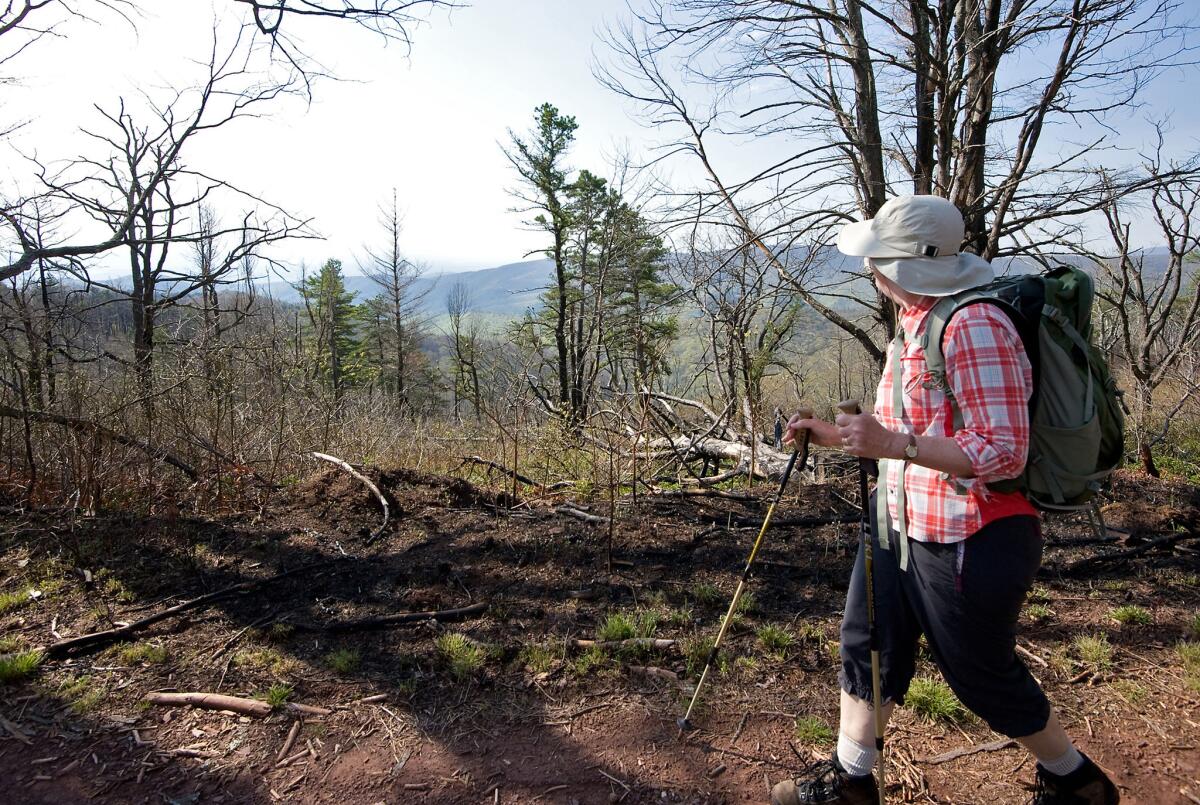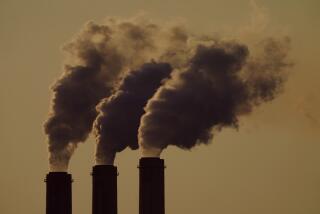U.S. to limit energy development in George Washington forest in Virginia

Oil and gas development will be limited in the George Washington National Forest in Virginia, the U.S. Forest Service said Tuesday in a long-awaited decision over an area that’s home to the headwaters of rivers that provide drinking water for the 4 million people in the Washington, D.C., metro area.
The million-acre national forest in western Virginia sits on the eastern edge of the Marcellus shale formation, whose vast deposits of natural gas have touched off a drilling bonanza in Pennsylvania and West Virginia. Energy companies have tapped the Marcellus gas through high-volume hydraulic fracturing, or fracking, which entails blasting rock formations with water mixed with sand and chemicals to unlock oil and gas deposits.
The oil industry says any natural gas could be extracted with little damage to the national forest and its waters. But the possibility of fracking has drawn broad opposition from the counties around the forest and the capital area, including members of Virginia’s congressional delegation and Washington’s mayor.
As part of a periodic planning process that all national forests undergo to determine the best use of their resources, the Forest Service said no new land in the forest would be opened to oil and gas development. The plan did not address the fate of existing oil and gas development rights. It also does not ban any particular production method, such as fracking.
About 10,000 acres are under federal gas leases and 167,000 acres are subject to private mineral rights. None of the existing leases and mineral rights are active, and there is no gas drilling in the forest now.
Michael Ward, executive director of the Virginia Petroleum Council, praised the decision because it does not ban fracking and leaves about 16% of the forest, the largest in the East, open to future development.
Environmental groups in Virginia welcomed the decision as a sensible response to the broad outcry against industrial gas development in the forest. The swath of the forest where gas development could occur would not affect water resources farther downstream, they said.
“The federal government has rightly heeded local wishes and chosen to protect the unspoiled lands of the GW,” said Megan Gallagher, interim director of the Shenandoah Valley Network, a land protection group. “There is no history of major oil and gas development in the Shenandoah Valley, and not one county has embraced industrial gas development as a priority for public or private lands.”
But some national groups said the decision did not go far enough to protect the forest and its waters. “Unfortunately, allowing the use of fracking within a part of the George Washington National Forest is part of the Obama administration’s embrace of oil and gas drilling, despite the water, air and climate pollution that is proven to come along with it,” said Earthworks energy program director Bruce Baizel.
For more coverage of the environment, follow @neelaeast
More to Read
Start your day right
Sign up for Essential California for news, features and recommendations from the L.A. Times and beyond in your inbox six days a week.
You may occasionally receive promotional content from the Los Angeles Times.






